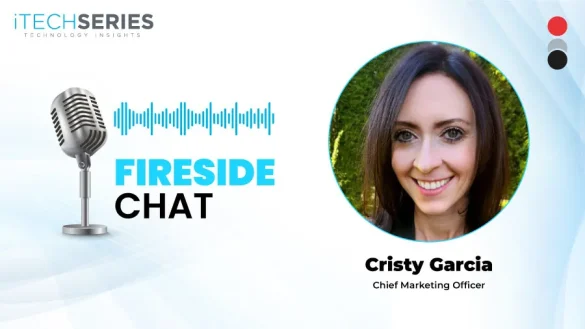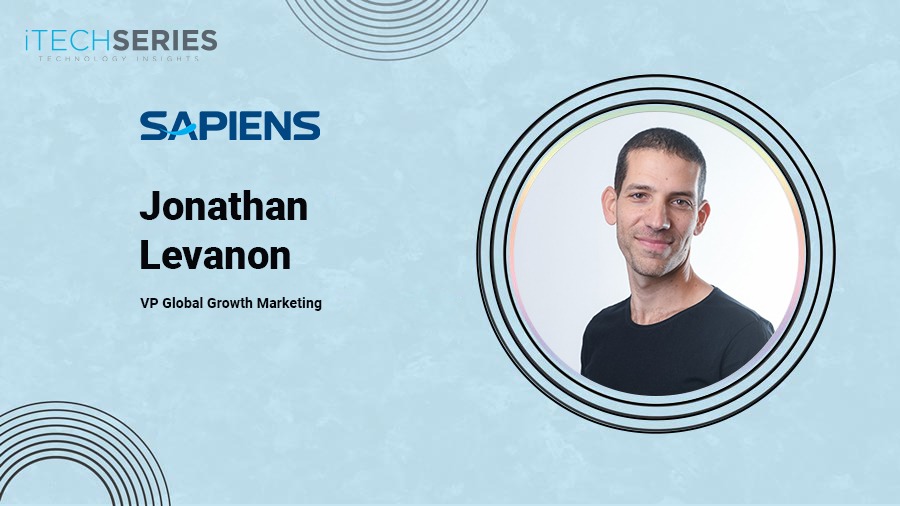Victoria Kouyoumjian, a seasoned product marketing leader shares her journey from an application developer to a product marketing pro. She talks about developing value propositions, cross-functional collaboration, driving marketing campaigns, leadership, and much more.
It’s a pleasure having you on this interview series, Victoria. Could you tell us a bit about yourself and your journey as a go-to-market leader?
Delighted to be here! Well, I started in tech as an application developer – and although my coding days are over (lol), the skills and training equipped me to move into Product Management, leading Product, Development, and DevOps teams – and going toe-to-toe with engineering as needed! From there, it was a short hop to Product Marketing, where my more technical background has served me well, as I can adeptly translate lower-level technical concepts into messaging and positioning that is consumable and tailored to the target audience – whether the C-Suite, practitioner, or developer. (Bonus: I also have an undergraduate degree in English Language and literature, so I enjoy crafting messaging and narratives that resonate.) I’ve also realized that my time in product management informs my product marketing motions since I now know first-hand how products and services go from roadmap to release.
As a product marketing leader, how do you determine and effectively communicate tailored product value propositions to various customer segments?
In my experience, effective and successful product marketing has a solid messaging and positioning framework at its foundation, working hand-in-glove with Product Management. The rigor at this [nearly first] step of the GTM process is critical to identify the core target audience(s); the challenges that the offering solves for the customer; the benefits provided (not features!); and then, of course, HOW it addresses the challenges. This phase of the process typically becomes a forcing function to get all stakeholders aligned on the value propositions for the target audiences. Once aligned, this messaging, including value propositions, then propagates to the GTM assets to be executed: email, social, PR, web, content, media, sales enablement, and more.
How do you handle cross-functional collaboration with sales, product development, and other departments to ensure a seamless go-to-market strategy?
I’m probably a bit biased when I say that the Product Marketing function holds the most uniquely collaborative role in an organization in that we sit at the intersection of Sales, Marketing, and Product, but require collaboration with Legal, Finance/Pricing, Analyst Relations, Public Relations, Operations, BI, Customer Service/Success, Support, and often Engineering and IT (I may have missed a team or two!). As such, communication and relationships are critical to building trust and visibility with each of these business units for a successful launch activity. Marketing should never be a blocker to the pace of innovation, so well in advance of product readiness, it is imperative to have a workback schedule that documents the roadmap of activities, owners, and deliverables – reviewed by the teams involved — such that when it’s Go Time, a launch kick-off doesn’t come as a surprise to any stakeholder: everyone knows their role, their responsibilities, the meeting cadence, and the milestones that must be met to achieve success on launch day. And if you have an amazing launch manager or program manager, to keep the trains running, in my experience, that is a recipe for success.
“If customers are made aware of the value of your product, they will use your product to extract that value and, as such, remain on the platform.”
As a product and GTM leader, how do you ensure that the voice of the customer is collected and used to further streamline go-to-market strategies?
The voice of the customer can take many forms, from online surveys to website behavior to NPS (Net Promoter Score), social listening, and many more. Tapping these techniques to gather customer feedback is one ingredient as product marketing crafts a GTM strategy. Putting that feedback to use is part of how product marketing tailors GTM, but it’s always a good idea to pressure-test the results with those in the front lines – Sales and Support, in particular – to prioritize the most impactful feedback and inputs and to strategically streamline GTM activities. I have also found that mining feedback from Customer Councils or strategic Customer Advisory Boards is extremely valuable, coupled with focused conversations with product managers, who are talking to customers every day.
Tell us about your most challenging yet rewarding GTM experience.
The work I completed at Amazon Web Services (AWS) was among my most challenging GTM experiences – in particular, the launch of Amazon QuickSight. Since it was the first BI SaaS offering from AWS, it demanded different messaging and positioning than the traditional AWS audience of über-technical developers and “makers”. I also needed to invent a new web experience and microsite for this target customer of BI, business analysts, and non-technical business users. I built how-to videos for new users and recorded voice-overs for the demos. I worked with customers for testimonials, crafted the press release with notable marquee brands, and assisted product management with licensing, pricing, and the [very popular] beta program with hundreds of customers eager to try it out. It was such a great experience since the teams were amazing, and we were all so dedicated to the product and mission in front of us. We launched on time, with Andy Jassy (then AWS CEO) using my narrative to announce the availability of Amazon QuickSight at AWS re:Invent in October 2015. Good Times!
As a marketing leader, how do you adjust your strategies to cater to different regions like AMER, EMEA, APJ, etc.?
First, it’s important to have close relationships with your key colleagues in the different regions to best navigate and work with the unique markets and audiences that come with each geography. Bringing in these colleagues early to understand the direction of the strategy is critical. Next, based on their feedback, marketing motions to execute the strategy in-region can be adjusted to accommodate, as needed. For example, local partners, ISVs, OEMs, events, budgets, etc. are most likely going to be different across each of the regions, so the strategy needs to be flexible around the regional tactics to be executed in-market. The steel thread that runs across all of the regional activities, however, is an understanding of the Objectives and Key Results (OKRs) and the KPIs for the success metrics around execution. Every regional team should be tracking to the same OKRs – otherwise, incentives to deliver on the strategy will be seriously diminished, along with the success of the launch/GTM activities.
What strategies have you found particularly effective in driving the adoption and retention of customers for AI-driven product offerings?
There are a minimum of 4 core tenets of Product Marketing:
- Awareness – ensuring that customers and prospects know about your offering to buy or stay on the platform.
- Acquisition – purchasing, attachment
- Adoption – making sure the product is sticky such that the customer knows the value it offers.
- Retention – because it costs exponentially more to acquire a net new customer than it does to keep an existing one!
If customers are made aware of the value of your product, they will use your product to extract that value and, as such, remain on the platform. It is the responsibility of product marketing to ensure that customers are made aware of the benefits and value of new features, functionality, enhancements, upgrades, and updates – communicating with customers through the vehicles and channels that they respond to best. To do this, it is important to understand the target audience since this will dictate those tactics.
For instance, reaching AI developers involves marketing motions that are different than a playbook that you might use for, say, the C-Suite or Technical Decision Maker. For example, with AI developer marketing, I remove the choreography and polish of “traditional” marketing tactics and instead, leverage platforms like Reddit or Stack Overflow, rather than predominantly LinkedIn, gravitating towards more gritty and ‘organic’ marketing tactics. Developer adoption and retention involve earning trust and then building on that trust. Some tactics under this strategy entail inviting AI developers to technical podcasts with respected peers or influencers; attending or hosting meetups, hackathons, and dev summits; and standing up opportunities for them to show their work, get their hands dirty with technology, and learn new skills, first-hand. In sum, meeting them where they already exist and encouraging genuine engagement through community- and relationship-building, rather than always attempting to pull them out of their existing community to a corporate website or product page.
From a reporting standpoint, what are some key metrics or KPIs that you keep a close eye on for measuring success and optimizing product or marketing campaigns?
There are many metrics that can be measured in marketing, so it’s important to capture the KPIs that are the most impactful since Marketing is often asked to define how it contributes to the success of the business. Having quantifiable, defensible data is critical. Activities should roll up to organizational Objectives and Key Results (OKRs), so campaign planning and programs should include related success criteria, and how those metrics are to be measured. For example, if an objective (OKR) is to grow relevance, how are KPIs to be captured that support that objective?
Some of the KPIs I look at are:
- Establishing or growing relevancy in a particular vertical or discipline and with a specific audience measured by impressions.
- Increasing Preference measured by CTR or video completion.
- Total Interaction Rate (TIR) – to measure the number and rate of user actions and engagements including Clicks to Landing page, ad interactions, social engagement, etc.
These metrics are assessed at a regular cadence in relation to the spend so that I can identify if we are reaching the target audience with the channels and vendors that are in-market, tracking QoQ trends to optimize where possible. Of course, having larger quarterly or bi-annual benchmarking or brand-lift studies allows for a view of the progress in the market toward greater adoption and engagement.
How metrics translate to revenue can be more challenging, so I review assisted conversions, attachment growth, and product adoption/usage metrics. Keeping sellers top of mind, marketing motions should fill the pipeline, so although I examine the number of MQLs generated, it’s equally important to determine the percentage of MQLs converted to SQLs, then to Sales Opportunities, and (hopefully) to Closed-Won. I also factor win-loss metrics, to understand where we did well, and what missteps to avoid in the future, to course-correct as needed for the most optimized GTM strategies.
With over 15 years in product marketing and product management, what do you consider the most critical aspect of a successful product GTM launch?
The success of a launch includes several steps and involves many teams, of course. But frankly, it starts with a skilled and disciplined product marketer who has attention to detail, thinks critically, communicates and collaborates broadly across the organization, and is skilled at translating concepts into impactful messaging and positioning that resonates with the target audience. Starting with a strong product marketer to drive the GTM launch, I can’t stress enough how important it is to have crisp and comprehensive messaging and positioning – because a company only has one opportunity to launch a new offering and it needs rigor up-front to ensure it lands successfully in-market. Messaging involves lots of conversations with Product management to understand the value proposition of the offering and the intended target audience, as well as the customer challenges that are solved. Once translated to a consumable narrative, the messaging and positioning then propagate to all the other necessary tactics of a GTM launch. To execute these tactics to a launch date, the next critical aspect is to have a visible, comprehensive, and tight workback schedule to inform all key stakeholders and keep the launch on schedule. This workback plan identifies owners, deliverables, dependencies, and dates of delivery – making all, who are involved, accountable towards contributing to a successful launch.
What would be your advice to budding marketing leaders on building and managing high-performing marketing teams?
I define a high-performing team as comprised of talented individuals – not just resources or people filling a role. A talented team is composed of individuals who are low-touch/high-productivity, meaning that they understand their role, have experience executing, and need nominal involvement from a people manager. Of course, this can be a bit of a unicorn – but if I have the opportunity to hire and build my team from the ground up, it is indeed what I strive for.
Regardless of whether you are building a net new team, or inheriting an existing one, it is the responsibility of the marketing leader to ensure that the team understands each of their roles and responsibilities, how their success is measured, and the expectations in their role, which ladder up to the objectives of the business. To equip the team for success, you should also ensure that team members are always clear on their priorities so time is spent on influential initiatives, and you should stay close to their productivity – note that this is different from micro-management — making yourself available to unblock any challenges or barriers as needed such that they can move forward successfully!

Intel Corporation is an American multinational corporation and technology company headquartered in Santa Clara, California, and incorporated in Delaware. Intel designs, manufactures, and sells computer components and related products for business and consumer markets. Intel’s mission is to shape the future of technology to help create a better future for the entire world. By pushing forward in fields like AI, analytics, and cloud-to-edge technology, Intel’s work is at the heart of countless innovations.
With over 15 years of experience in technical Product Marketing and Product Management, Victoria specializes in defining and executing launch and GTM strategies that drive business impact. She has a proven track record of leading high-performing teams to launch and scale B2B SaaS cloud solutions and AI services for mid-market and enterprise clients, particularly targeting developers. In her present role, she is responsible for managing a dynamic and talented team to build and augment AI Developer Marketing and AI in the Enterprise.











